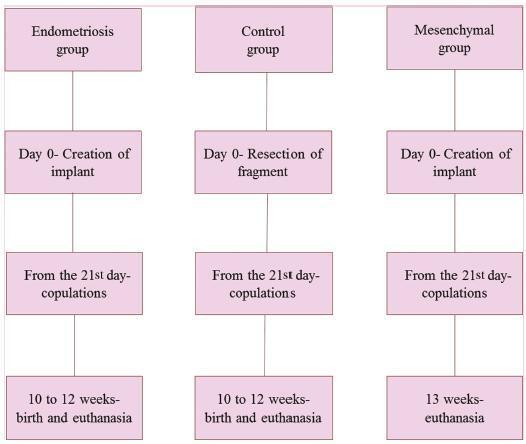-
Original Article05-01-2017
The Effect of Mesenchymal Stem Cells on Fertility in Experimental Retrocervical Endometriosis
Revista Brasileira de Ginecologia e Obstetrícia. 2017;39(5):217-223
Abstract
Original ArticleThe Effect of Mesenchymal Stem Cells on Fertility in Experimental Retrocervical Endometriosis
Revista Brasileira de Ginecologia e Obstetrícia. 2017;39(5):217-223
Views160See moreAbstract
Purpose
To evaluate the effect of mesenchymal stem cells (MSCs) on fertility in experimental retrocervical endometriosis.
Methods
A total of 27 New Zealand rabbits were divided into three groups: endometriosis, in which endometrial implants were created; mesenchymal, in which MSCs were applied in addition to the creation of endometrial implants; and control, the group without endometriosis. Fisher’s exact test was performed to compare the dichotomous qualitative variables among the groups. The quantitative variables were compared by the nonparametric Mann-Whitney and Kruskal-Wallis tests. The MannWhitney test was used for post-hoc multiple comparison with Boniferroni correction.
Results
Regarding the beginning of the fertile period, the three groups had medians of 14±12.7, 40±5, and 33±8.9 days respectively (p = 0.005). With regard to fertility (number of pregnancies), the endometriosis and control groups showed a rate of 77.78%, whereas the mesenchymal group showed a rate of 11.20% (p = 0.015). No differences in Keenan’s histological classification were observed among the groups (p = 0.730). With regard to the macroscopic appearance of the lesions, the mesenchymal group showed the most pelvic adhesions.
Conclusion
The use of MSCs in endometriosis negatively contributed to fertility, suggesting the role of these cells in the development of this disease.



